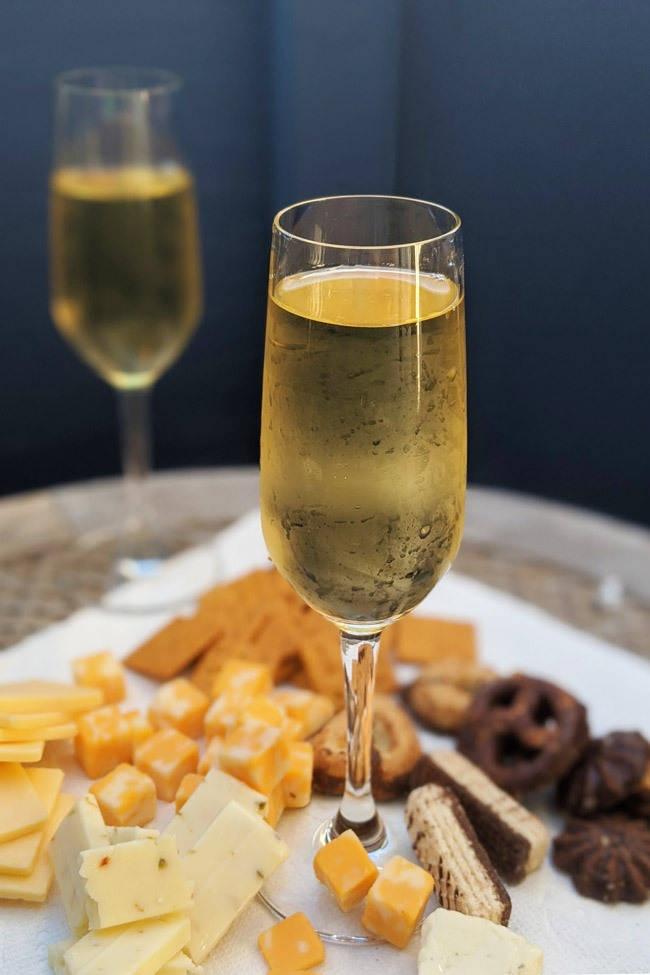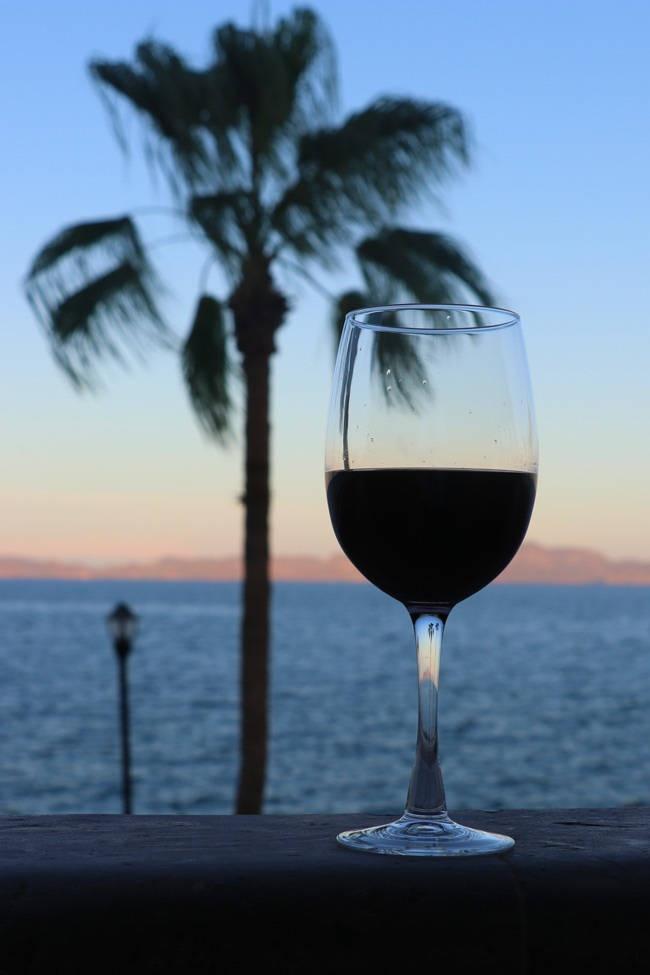Like anything involving wine, there are nuances to questions that I get asked. For example, the question, "Should wine be refrigerated". The simple answer is "maybe" but the best condition for storing wine is generally not at 40 degrees Fahrenheit. While a wine chiller might be considered a refrigerator by some, it is not the same as simply storing your bottles in a standard refrigerator like you might have in your kitchen right now. Let's take a deeper look at this question though and examine the important role that temperature takes in storing wine.
Countless wine drinkers still live by the old rule of drinking reds at room temperature, and whites, rosés, and bubbles have to be chilled. However, sometimes you’ll drink a red that’s colder or a warmer white and realize that it tastes better. This throws the idea of the ‘correct’ temperature right out the window.
If you know what we’re talking about, you’ve probably also wondered if the rules are wrong. Wonder no longer, because we’re going to explore the ifs and whys of bunging a bottle of vino in the fridge or freezer before serving it.

Yes, Temperature Matters When Storing and Serving Wine
The temperature that you serve (and drink) wine matters. So, the answer to how wine should be stored is that some wines should be refrigerated.
Temperature can affect the aromas and flavors of wine, so when you serve it at its optimal temperature, you get to experience it at its best. That said, wine shouldn’t be kept in the refrigerator for more than two to three weeks.
It makes sense that not all wines should be served at the same temperature; it all comes down to their chemical composition.
Bubbly contains carbon dioxide, while white wine is noted for its acidity. The amount of residual sugar differs from one dessert wine to another, and reds are structured by their tannins. How temperature affects the wine’s various components is what causes some characteristics to be highlighted or muted.
Refrigerators Are Not The Same As Wine Chillers
Now that we know the answer to the question, ‘Should wine be chilled,’ we need to look at some of the issues of cooling it in a regular refrigerator.
According to certified sommelier Tina Morey, regular refrigerators are not designed for wine. This means there are a few things we need to keep in mind when using them to chill wine.
For starters, regular fridges are usually much colder than refrigerators designed for wine, and they typically don’t have any humidity. Special wine fridges create a near-perfect environment for wine, including the best average temperature and approximately 57% humidity. Some humidity is important, especially when storing wine with real corks, as it prevents the corks from drying, shrinking, and letting air into the wine.
Additionally, while the position you store the wine in might not be important for a bottle you plan to drink immediately, storing bottles upright in a refrigerator can dry the cork and lead to other issues as well.
Unfortunately, many of us lack the means, space, or desire for a dedicated wine refrigerator, which means we end up using the one in the kitchen. According to Morey, that’s OK if we stick to a few guidelines:
- Wine shouldn’t be kept in the fridge for more than a month.
- Keep the bottle away from the area near the motor to decrease the intensity of the vibrations. These tiny movements can affect the quality of the wine.
- Keep bottles with natural corks lying down. The cork should always be in contact with the wine.
- When closing a bottle of wine, whether it’s to remain on the counter or it’s going back into the fridge, ensure it's sealed as tightly as possible. Do this by reinserting the cork or by using a snugly fitting wine stopper.

Understanding Proper Temperature Ranges For Serving Wine
Whether you’re one of those folks who chooses to open a bottle shortly after arriving home with it, or you’re happy to wait for a while first, you might be wondering how wine should be served. The ideal serving temperature for wine differs from the standard storage temperature - 55 degrees. Instead, the serving temperature is designed to help maximize your ability to enjoy the flavor and complexity of different types of wine.
For instance, red wines are generally better served warmer than white and sparkling wines.
Ideal Temperature for Serving Red Wines
Syrah, Zinfandel, Merlot, Malbec, Cabernet Sauvignon - 60-60 degrees F
Cabernet Franc - 60 degrees F
Ideal Temperature for Serving White Wines
Chardonnay, viognier, and white Bordeaux Blends - 50 degrees F
Pinot Gris, Riesling, Sauvingon Blanc - 45-50 degrees F
Champagne and Sparkling Wines are Best Served Even Colder
Champagne and sparkling wines should be served at about 40 degrees F
Over time, you may find that the optimal temperature is different for every bottle of wine. However, but not everyone has the supplies or the time for experiments to find that sweet spot. The good news is that these guidelines are pretty easy to follow.
Should Red Wine Be Refrigerated?
Most red wines are at their best when served at a temperature between 55°F and 65°F. Loire Valley Cabernet Franc and other light-bodied, high-acid reds prefer the lower end of that range. Napa Cabernet Sauvignon and Bordeaux-style blends that are full-bodied and high in tannins prefer the higher end, so don’t refrigerate them for longer than 45 minutes. The old rule of serving reds at room temperature is based on European climates, which are decidedly different from those in North America and elsewhere.
Should Red Wine Be Refrigerated After Opening?
According to Morey, if you don’t finish drinking a bottle of red and you want to keep it, make sure it is sealed tightly, then store it in the fridge. The cold temperatures will slow down the oxidizing of the wine. Remove the bottle from the fridge half an hour before serving it again.
The trick to chilling white and rosés is not to let them get too cold. Chilling these wines lifts their acidity and aromas. However, when they get too cold, the temperature has the opposite effect on the flavors, muting instead of highlighting them.
Should White Wine Be Refrigerated?
Fruity, light whites such as Sauvignon Blanc and Pinot Grigio are great when served at a temperature between 45°F and 50°F. Full-bodied whites such as Californian and Burgundian Chardonnays are fabulous when done between 50°F and 60°F, which is also a good temperature range for dessert wines Sauternes. If you plan to keep a bottle of white wine in the refrigerator for a longer period rather than a shorter one, choose a bottle with a synthetic cork or a screw-cap.
Should Champaign and Sparkling Wine Be Refrigerated?
Champagne, champagne-method, and sparkling wines should be chilled to a temperature between 40°F and 50°F before drinking. Colder liquids trap carbon dioxide better than warmer liquids. If you’re serving a prestige cuvée or vintage champagne, serve it at the higher end of that temperature range to unlock their complex flavors and aromas. If you’re serving a bottle of Prosecco or another fruity, light-bodied sparkling wine, make sure the temperature is at the lower end of that range.
You might be tempted to keep a bottle of champagne or sparkling wine in the fridge just in case you need to pop the cork for an impromptu celebration. Like any other wine with a natural cork, you shouldn’t keep it in the fridge for more than three weeks as the cork will dry out. If you haven’t had a reason to celebrate after three weeks, celebrate life itself by enjoying it with dinner, and then replace it with another bottle.

Sometimes A Cold Glass Of Red Wine Just Works!
While there are the right answers to questions about should you refrigerate wine or not and then there are the practical realities. For instance, while visiting Loreto, Baja Mexico last year I discovered that the wine served at dinner, a Malbec - Pinot Noir blend served chilled was actually quite delicious and refreshing. Prior to that night, I would NEVER have considered anything but a slightly below room temperature glass of wine like that. However, it just simply worked in that environment on a hot evening in the open air as we enjoyed delicious food and conversation.
Similarly, while the concept of putting ice in my wine is appalling to me, ... many people I know enjoy it that way.
When I've asked winemakers about things like this, generally the response is the same that I get from distillers. "Enjoy your wine. Drink it how you like it as long as you are drinking mine!"
Serving wine at the best temperature may require a teeny bit more effort and possibly self-control than opening a bottle that is either too warm or too cold. Still, your palate and your guests will thank you for it.
